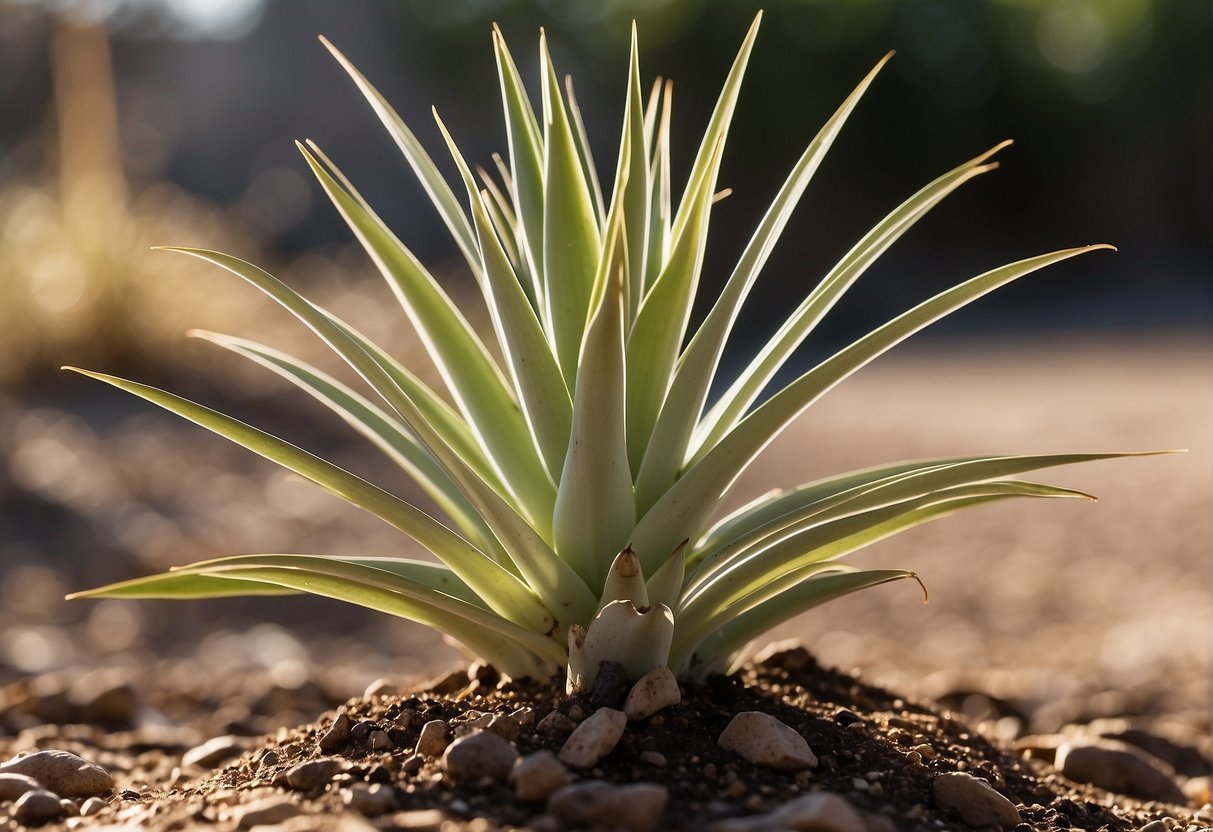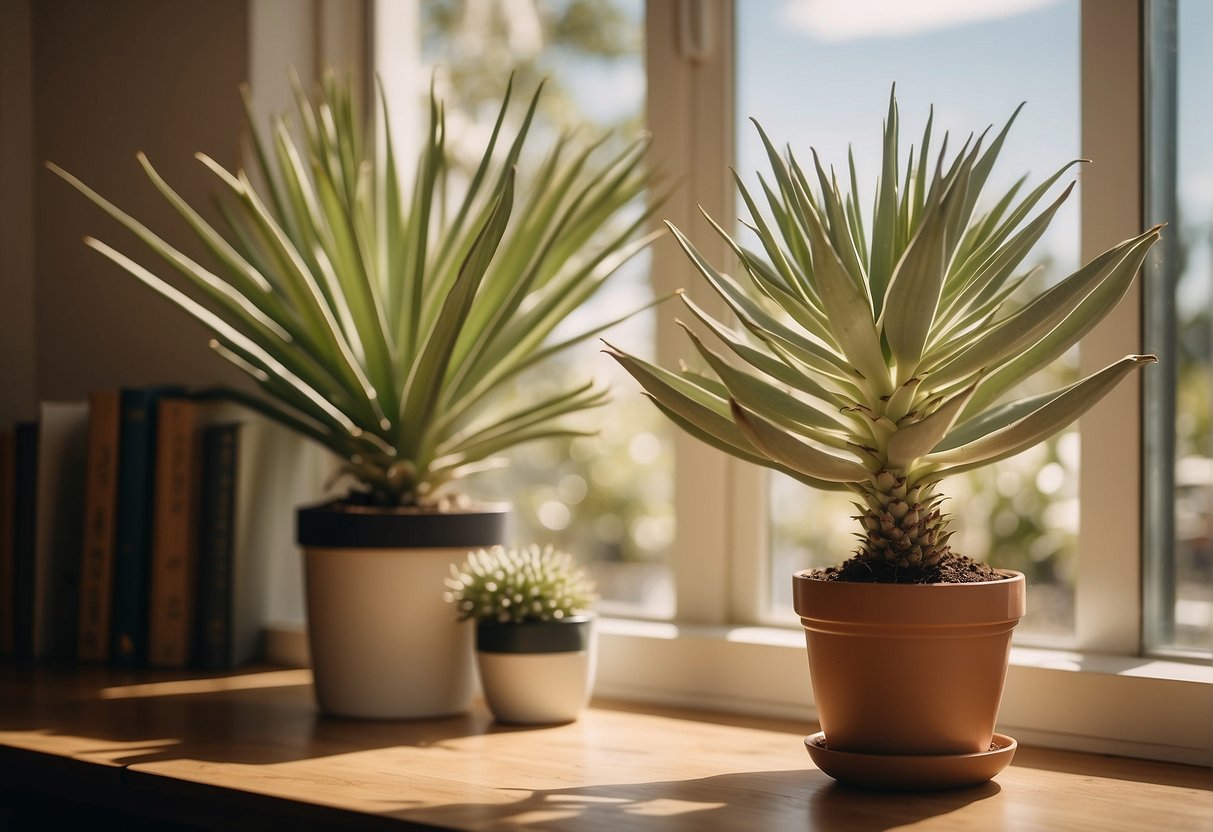How to Care for Yucca Plants: Tips and Tricks
Should you be in the market for an easy-to-care-for plant that brings a touch of verdancy to your living space, consider the yucca plant as an excellent choice. Distinguished by their pointy leaves and impressive height, these arid region vegetation don’t demand much upkeep. However, adhering to a few fundamental care practices is crucial to maintaining the health and vigour of your yucca plant.

First and foremost, it’s important to make sure your yucca plant is getting enough light. These plants prefer bright, indirect sunlight, so try to place them near a window that gets plenty of natural light. You should also make sure your yucca plant is potted in well-draining soil and water it only when the top inch of soil feels dry to the touch. Overwatering can be a common problem with yucca plants, so it’s important to let the soil dry out between waterings.
If you’re looking to take your yucca plant care to the next level, there are some advanced management techniques you can try. For example, you can fertilize your yucca plant once a month during the growing season to give it an extra boost of nutrients. You can also prune your yucca plant to keep it looking neat and tidy, or even propagate it to create new plants. With a little bit of effort, you can turn your yucca plant into a stunning focal point in your home.
Key Takeaways
- Yucca plants prefer bright, indirect sunlight and well-draining soil.
- Overwatering can be a problem, so make sure to let the soil dry out between waterings.
- Advanced care techniques like fertilizing and pruning can help your yucca plant thrive.
Basic Yucca Plant Care
Yucca plants are low maintenance and easy to care for, making them a great addition to any indoor or outdoor space. Follow these basic care tips to ensure your yucca plant thrives.
Optimal Growing Conditions
Yucca plants prefer temperatures between 60-95°F (15-35°C) and thrive in full sun. However, they can also survive in low light conditions. When growing yucca plants indoors, place them near a sunny window for optimal growth. Yucca plants prefer well-draining soil and do not require frequent repotting.
Watering and Feeding
When it comes to watering, less is more. Yucca plants are drought-tolerant and can go several weeks without water. Overwatering can lead to root rot, so it’s important to let the soil dry out completely before watering again. When watering, thoroughly saturate the soil and allow excess water to drain out of the pot. Yucca plants do not require frequent fertilization, but you can feed them every 2-3 months with a balanced fertilizer.
Common Pests and Diseases
Yucca plants are relatively pest and disease resistant, but mealybugs, scale, and leaf spot can occasionally be a problem. Mealybugs and scale can be treated with a solution of soap and water or neem oil. Leaf spot can be prevented by avoiding overwatering and ensuring good air circulation around the plant. If your yucca plant shows signs of root rot, remove it from the pot and trim away any affected roots before repotting in fresh, well-draining soil.
By following these basic care tips, your yucca plant will thrive and add a touch of green to your indoor or outdoor space.
Advanced Yucca Plant Management

Propagation Techniques
If you want to propagate your yucca plant, you can do so by taking stem cuttings from a mature plant. To propagate, take a stem cutting that is at least 4 inches long, remove the lower leaves, and let the cutting dry for a few days before planting it in well-draining soil. Alternatively, you can also propagate yucca plants through germination, but this method requires more time and patience.
Pruning and Maintenance
Yucca plants require minimal maintenance, but it’s important to prune them occasionally to keep them looking their best. Prune away any dead or damaged leaves, and cut back any stems that have become too tall or leggy. Yucca plants also benefit from occasional repotting, especially if they have outgrown their current container.
Varietal Selection and Landscaping
Yucca plants come in a variety of species, each with its own unique characteristics and growth habits. Some yucca species are better suited for indoor houseplant use, while others are hardy and drought-tolerant enough to thrive outdoors in a garden setting. When selecting a yucca plant for your landscaping needs, consider factors such as height, growth rate, and overall appearance.
Common problems that can affect yucca plants include pests such as scale insects and spider mites, as well as fungal diseases like root rot. To prevent these issues, make sure your yucca plant is planted in well-draining soil and is not overwatered.
Overall, yucca plants are a great addition to any garden or indoor space, and with proper care and maintenance, they can thrive for years to come.
Frequently Asked Questions

What are the ideal lighting conditions for indoor yucca plants?
Yucca plants prefer bright, indirect sunlight. They can tolerate low light conditions, but too little light may cause them to grow slowly or not at all. Make sure to keep your indoor yucca plant near a window that receives bright, indirect sunlight for several hours a day.
How often should I water my yucca plant, both indoors and outdoors?
Yucca plants are drought-tolerant and do not require frequent watering. Water your indoor yucca plant when the top inch of soil feels dry to the touch. Outdoor yucca plants may only need to be watered during extended periods of drought or when the soil is completely dry.
What is the best way to fertilize a yucca plant?
Yucca plants do not require frequent fertilization. Use a balanced fertilizer once a month during the growing season (spring and summer). Do not fertilize during the dormant season (fall and winter).
How should I prune a yucca plant to maintain its health and appearance?
Pruning is not necessary for the health of a yucca plant, but it can help maintain its appearance. Remove any dead or damaged leaves by cutting them off at the base. To control the size of the plant, cut back the stem to the desired height. Wear gloves when handling yucca plants, as they have sharp leaves.
What are common problems with yucca plants and how can I prevent them?
Common problems with yucca plants include root rot, spider mites, and scale insects. To prevent root rot, make sure the soil is well-draining and do not overwater. Spider mites and scale insects can be prevented by regularly cleaning the leaves and stems with a damp cloth or spraying them with a gentle soap solution.
How do I protect my outdoor yucca plant during winter?
Yucca plants are hardy and can tolerate cold temperatures, but it is still important to protect them during harsh winter conditions. Cover the base of the plant with a layer of mulch to protect the roots from freezing. If your area experiences heavy snowfall, brush off any snow that accumulates on the leaves to prevent damage.


